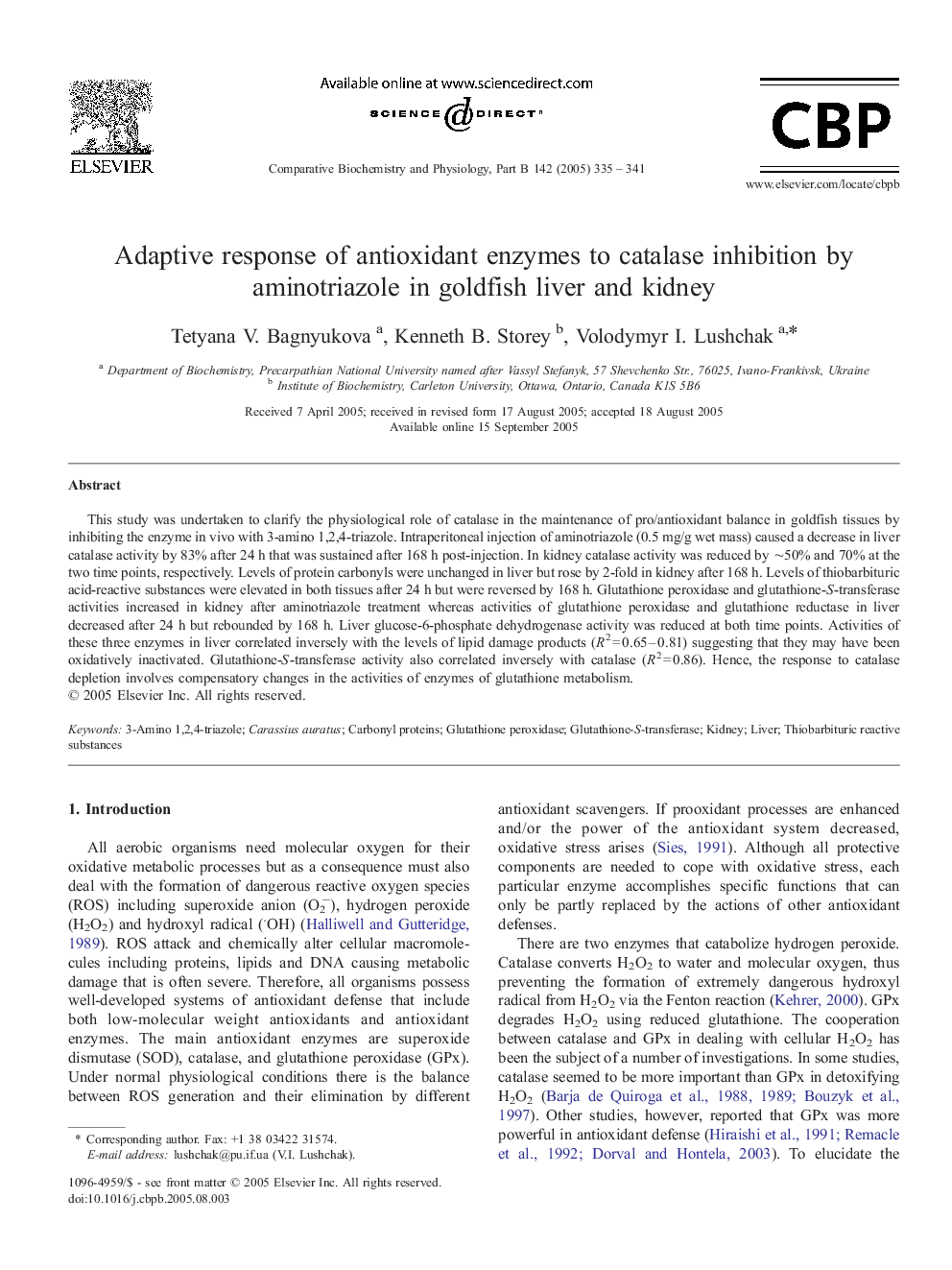| Article ID | Journal | Published Year | Pages | File Type |
|---|---|---|---|---|
| 10820556 | Comparative Biochemistry and Physiology Part B: Biochemistry and Molecular Biology | 2005 | 7 Pages |
Abstract
This study was undertaken to clarify the physiological role of catalase in the maintenance of pro/antioxidant balance in goldfish tissues by inhibiting the enzyme in vivo with 3-amino 1,2,4-triazole. Intraperitoneal injection of aminotriazole (0.5 mg/g wet mass) caused a decrease in liver catalase activity by 83% after 24 h that was sustained after 168 h post-injection. In kidney catalase activity was reduced by â¼50% and 70% at the two time points, respectively. Levels of protein carbonyls were unchanged in liver but rose by 2-fold in kidney after 168 h. Levels of thiobarbituric acid-reactive substances were elevated in both tissues after 24 h but were reversed by 168 h. Glutathione peroxidase and glutathione-S-transferase activities increased in kidney after aminotriazole treatment whereas activities of glutathione peroxidase and glutathione reductase in liver decreased after 24 h but rebounded by 168 h. Liver glucose-6-phosphate dehydrogenase activity was reduced at both time points. Activities of these three enzymes in liver correlated inversely with the levels of lipid damage products (R2Â =Â 0.65-0.81) suggesting that they may have been oxidatively inactivated. Glutathione-S-transferase activity also correlated inversely with catalase (R2Â =Â 0.86). Hence, the response to catalase depletion involves compensatory changes in the activities of enzymes of glutathione metabolism.
Keywords
Related Topics
Life Sciences
Biochemistry, Genetics and Molecular Biology
Biochemistry
Authors
Tetyana V. Bagnyukova, Kenneth B. Storey, Volodymyr I. Lushchak,
